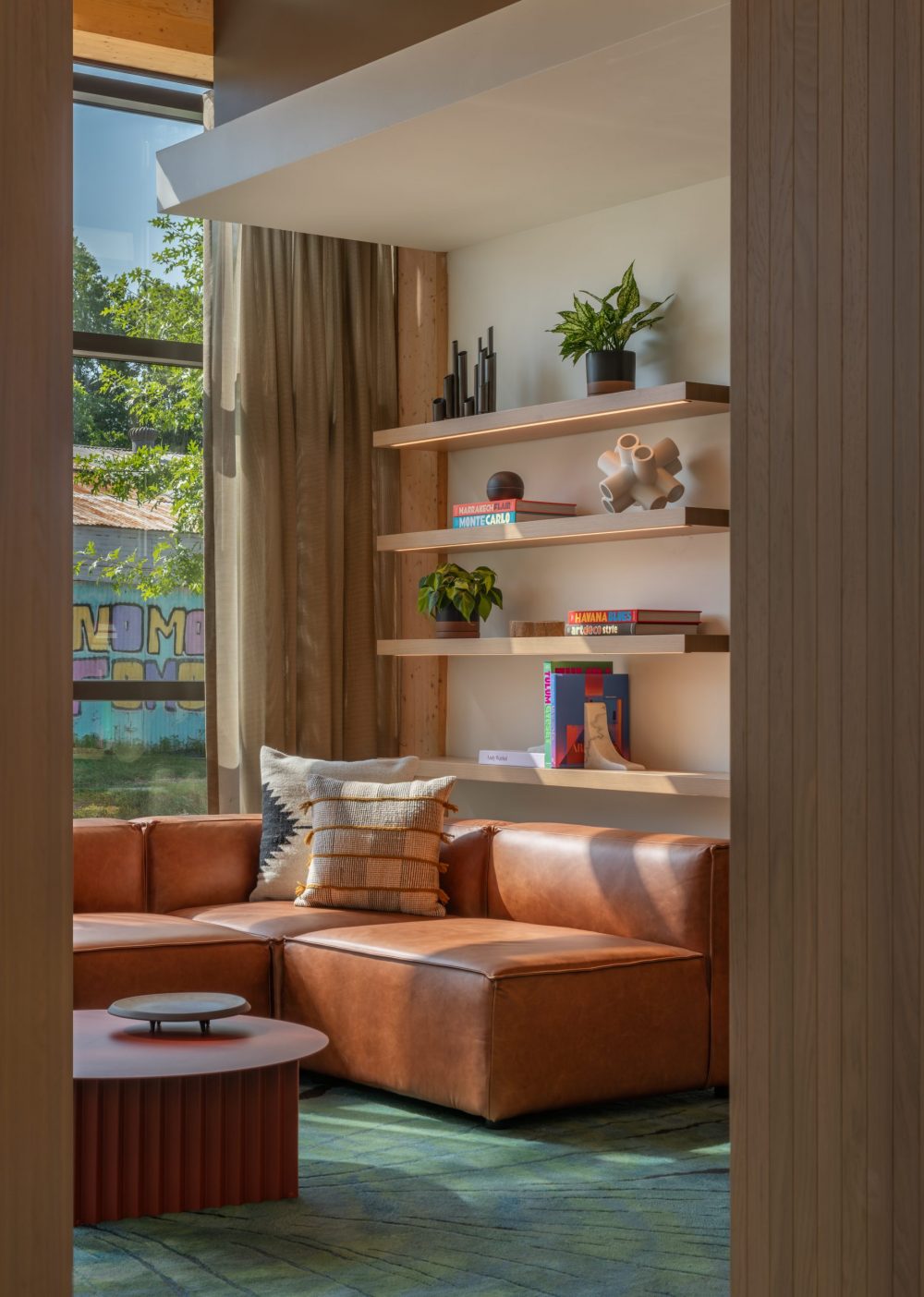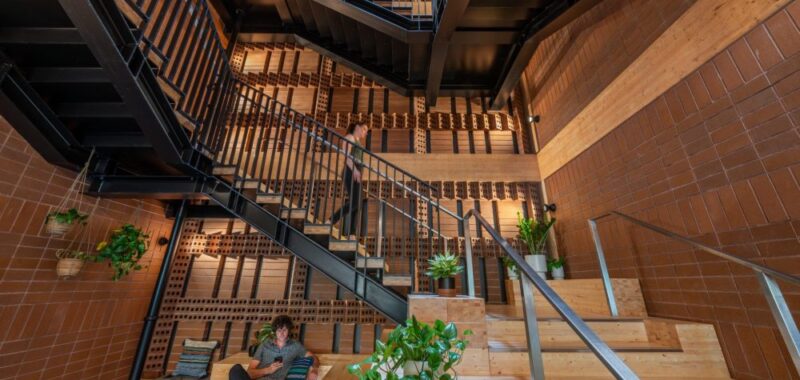Designing for today’s workplace is no longer just about square footage, it’s about impact.
Organizations and employees expect more from their environments: healthier air, emotional resonance, flexibility, and alignment with sustainability goals. People want to work in places that feel good, perform well, and reflect their values.
The use of mass timber as an alternative building material is uniquely positioned to meet this moment.
This shift is already underway in next-generation office ecosystems through projects like T3 ATX Eastside in Austin, Texas, and T3 Sterling Road in Toronto, which strategically apply mass timber and biophilic design to redefine high-performance workplaces. Not only through environmental metrics, but through how people connect with the terrain of the workplace. That’s where intentional interior design makes a difference.
The Timber Effect
Among emerging building materials, few carry as much promise, or presence, as mass timber. It’s gaining traction across the U.S. for its low-carbon profile, construction efficiency, and raw beauty. But beyond the technical specs, the emotional value of timber is becoming increasingly clear. There’s something deeply human about the presence of wood in a workplace.
People linger a little longer, breathe a little easier, and feel more at home in wood-rich environments. In fact, 82% of employees exposed to wood report higher wellbeing, and 70% say they feel more connected to nature, according to a study conducted for Forestry Innovation Investment (FII).
Designs that highlight the honest character of timber allow the material to take center stage. Timber serves as an anchor to open workspaces, quiet zones, and communal areas in warmth and authenticity. This material choice isn’t just aesthetic, it’s intentional. Mass timber supports a broader narrative of sustainability, innovation, and wellbeing that resonates with today’s tenants and workforces.
The successful use of carbon-neutral materials like mass timber in the built environment is challenging the whole industry to think differently about what materials we’re using and how this helps inform the spaces we’re designing.

Designing for the Senses: Biophilia in Action
Biophilic design introduces natural elements, through daylighting, materiality, or spatial flow, to mimic the sensory richness of nature inside the workplace. Timber’s unique properties make it a powerful biophilic tool. Visually, its grain patterns and warm tones offer comfort and connection. Tactilely, it invites touch and interaction. Even its scent can create subtle emotional responses that ground and calm the nervous system.
Research shows that wood not only improves focus and mood but also reduces physiological stress responses like elevated heart rate and blood pressure. It also naturally moderates indoor humidity to a healthy range between 40% and 70%, supports acoustical comfort, and reduces VOC emissions. All of which are key factors in creating workplaces where employees can plant roots.
Biophilic design introduces natural elements into the built environment in ways that support health and happiness. Whether expressed through daylight, texture, or spatial rhythm, the aim is to echo the textures of nature indoors. At T3 ATX Eastside, this comes to life through interiors that reflect the surrounding Austin landscape. A mix of flexible furnishings and intimate nooks encourages movement and moments of pause, supporting a variety of work styles throughout the day.

The ROI of Wellbeing
For developers and tenants, the value of mass timber goes beyond aesthetics. It’s a strategic investment in occupant wellbeing, and that wellbeing drives measurable returns. Workplaces designed with wellbeing in mind can boost productivity by up to 25% and reduce sick leave by 30%, according to data from FII.
In a competitive leasing market, workplaces like the T3 developments offer a clear point of differentiation. They not only command premium rates but also deliver on the sustainability and wellbeing goals that matter to modern organizations. For clients, timber becomes a visible expression of values: environmental responsibility, innovation, and care for people.
Designers are also discovering that timber buildings offer more with less. Their structural elegance allows us to simplify ceiling systems, reduce finishes, and create spatial richness with honest materials. The result is a workplace that feels both elevated and grounded, beautiful in its restraint, and generous in its intent.

A Workplace that Breathes
Beyond business metrics, the emotional experience of a space matters. At its best, biophilic design is quiet. It doesn’t announce itself. It transforms every element of the human experience in powerful ways, from material to mood. It shapes how people arrive, engage, and thrive throughout the day.
When natural materials, thoughtful interiors, and purposeful architecture come together, the result is more than just a workplace but an incubator for wellbeing. Studies show that employees in environments with visible wood report greater job satisfaction, reinforcing the connection between intentional design and human performance.
By bringing nature indoors through mass timber, today’s offices are evolving into places that support the whole person. These are environments that breathe, with warmth, authenticity, and balance, meeting the needs of a workforce that values both purpose and performance.

